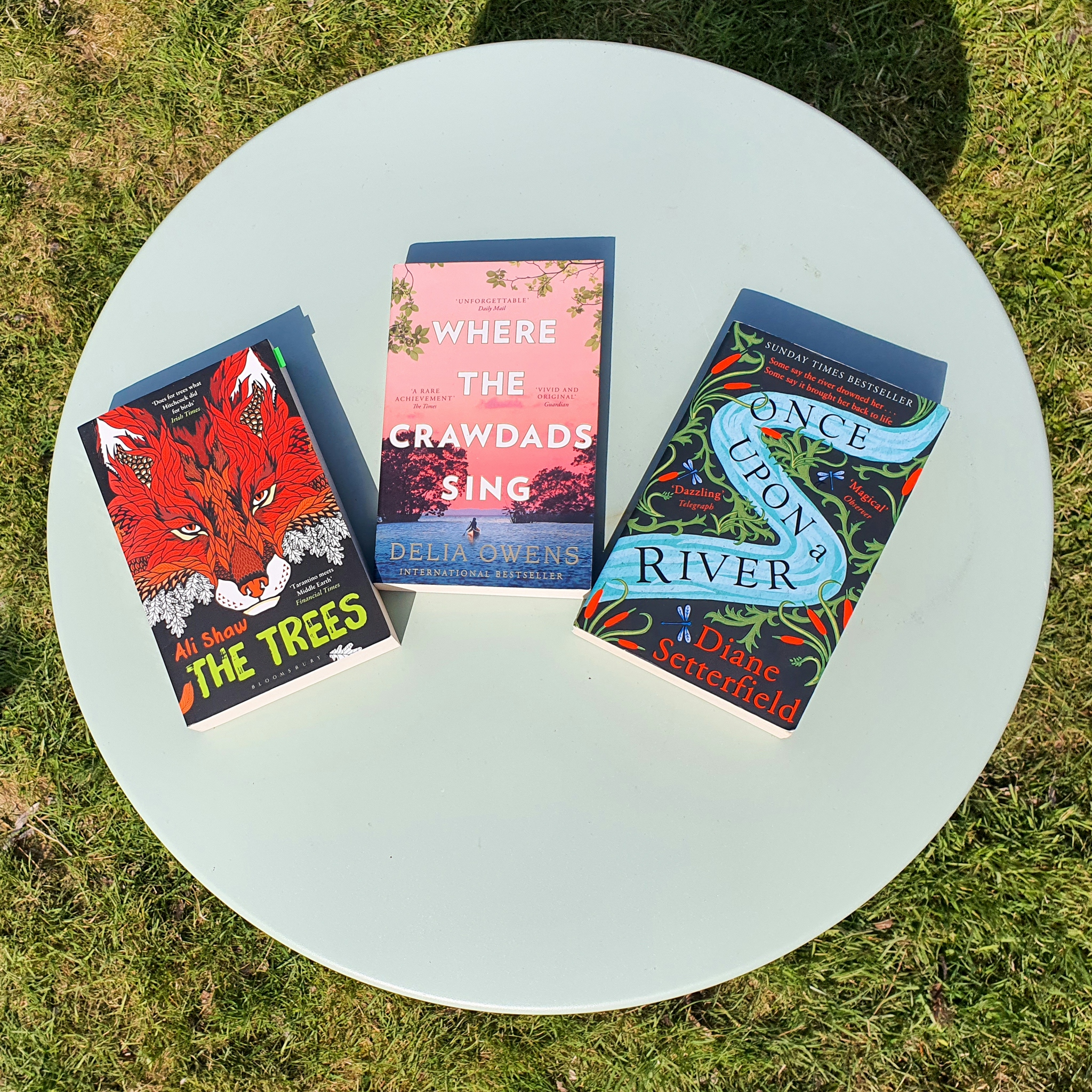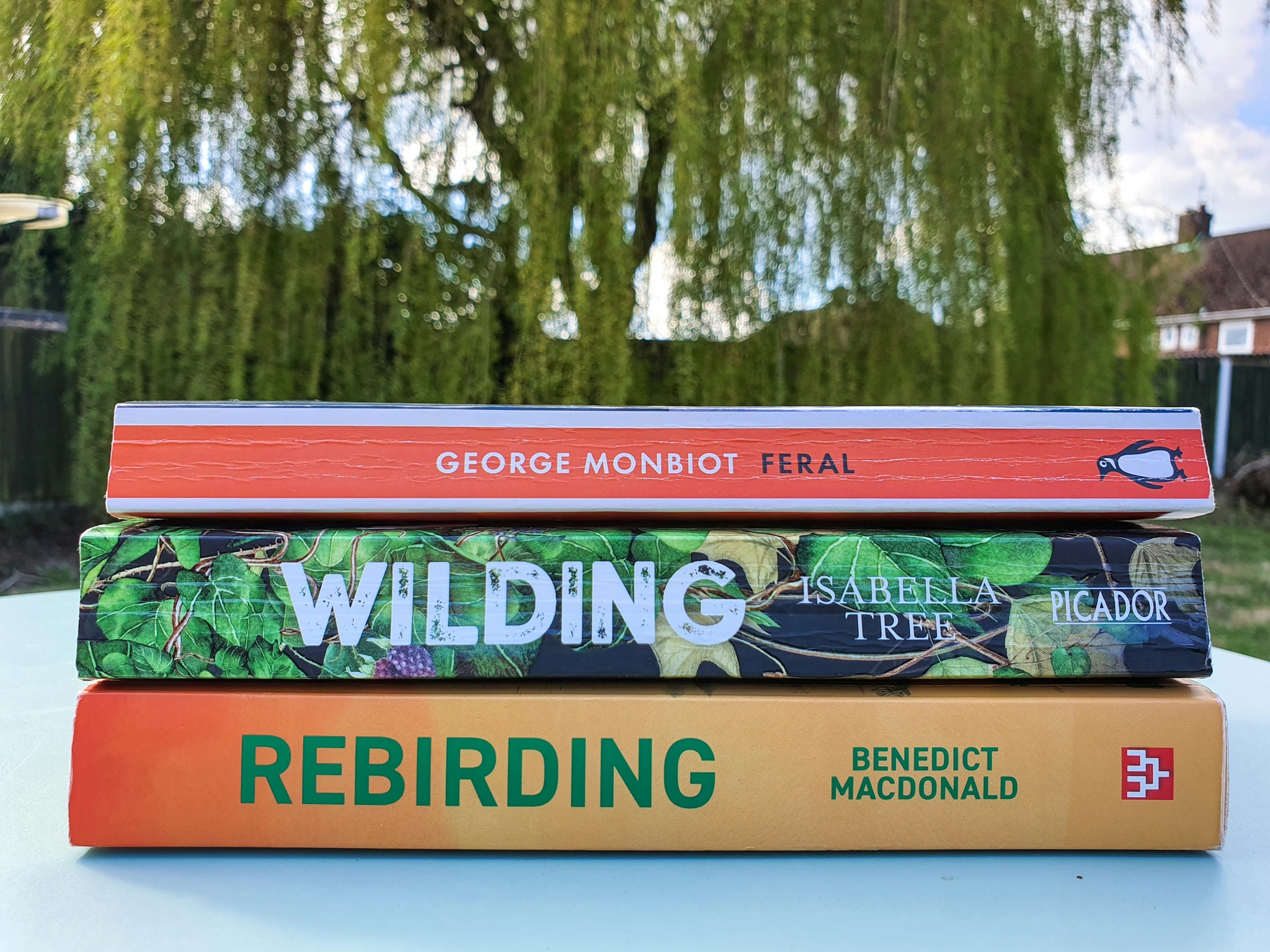HOW TO READ MORE (NATURE) BOOKS

One of my favourite things about loving nature is that I know I’ll never run out of new things to discover – the wonders of the natural world are endless and reading all we know about them would take several lifetimes; learning all that we still don’t know about them would take several more.
This vast array of fascinating information about the world around us is exciting but it’s also a little overwhelming. I feel like a kid in the world’s biggest sweetshop – there’s so much I want to read, and so little time to read it!
As a result of this and, to a smaller extent, as a result of my unbridled envy towards people who post a ‘wrap up’ stack of 10 or more books on Instagram every month, I’ve done a lot of research on how to read more books.
Here’s my approach.
1. READ AS A GRAZER
I’ve been honing a reading technique that I think is fairly unique as I haven’t seen it anywhere – although it’s arguably a mash up of lots of different points.
The basic idea is this. You know how some people describe their eating habits as ‘grazing’?
Anyone who has ever read a women’s magazine is nodding sagely. It refers to a tendency to eat little and often rather than to eat three big meals a day. I think that’s the more enjoyable and efficient way to read.
Here are the key points to my approach:
· Have multiple books on the go at the same time.
I don’t mean two books, I mean multiple books, several books even (shock, horror).
Dipping in and out of several books is significantly easier with non-fiction than it is with fiction, because you don’t need to keep track of characters or a narrative – but with a bit of practice you can chuck a fiction novel or two in there, if you like.
· Flit between those books.
When people read two or more books, they tend to read big chunks of each book in turn, and they tend to stick to one of the books in any given session of reading. This is a mistake.
The key to the grazing method is to swap books straight away if you start to get bored, your attention starts to wander, your eyes start to close, or you start getting the itch to reach for your phone.
· Read in drips and drabs.
When you’re reading several books, and you’re flitting between them, it doesn’t matter if you haven’t got an hour to sit with a nice cup of tea and read your book.
You’re going to think I’m stating the blindingly obvious here but pick one of your books up whenever you can.
· Stop reading books you don’t like.
If a book feels like a slog every time you flit back to it, chuck it on the DNF (did not finish) pile and move on with your life.
This approach has hugely increased how much I’m able to read and – unlike advice on skim-reading – it doesn’t reduce the enjoyment or quality of the reading.
It works well because it changes the emphasis from reading this book to just reading.
The worst habit I have – and I believe many of us do it – is to turn on the TV or pick up my phone when I get tired of reading, or the book I’m reading gets a bit slow. You end up doing something you don't even really want to do, like re-watching Suits for the fifth time.
The game changer is having several books on the go or, hell, if you really want to go for it, a whole TBR (to be read) shelf open to you at any time.
You’re perhaps familiar with the concept of trying to maintain a good level of tipsiness (which apparently is a word) throughout a night out by getting another drink when you start to feel your merriness fading away – use the same approach when maintaining your intoxication with reading (cringe) by swapping your book out whenever your enjoyment starts to wane.

If you want to chuck some fiction books on your TBR pile, here are three brilliant nature-related novels.
2. TAKE A BOOK WITH YOU EVERYWHERE
Maybe this belongs on the obvious list – but maybe it doesn’t. Stephen King stresses the importance of it several times in his book On Writing, so clearly some readers don’t find it obvious and need to be reminded (myself included).
About a decade ago, many people I knew had a book with them wherever they were. I was one of those people, but even as a staunch believer in reading at any opportunity, I’ve found that I take my book with me less often now. I tell myself it’s because I have the Kindle app on my phone, but I’m much more likely to scroll through social media than read a book.
Make sure a book is part of your ‘leaving the house list’: keys, phone, wallet, book.
3. SWAP BETWEEN MEDIUMS
There seems to be a bit of a war raging between readers who like ‘real’ physical books and readers who prefer to read on e-readers, like Kindles, or screens, like phones or tablets.
I’ve suggested you should flit between books; you should also flit between mediums.
Sometimes the ease of reading on a Kindle will make you more likely to read – being able to read in the dark, adjust the font size, look up the definition of words just by tapping them, and having it save your page for you can prompt you to read for longer. At other times, the allure of a paperback – the feel, the smell, the visible progress – will engage you more.
Stop trying to decide whether you fall in the books or ebooks camp and just flit to whichever feels more engaging at any point in time.
4. STOP TRYING TO KEEP YOUR BOOKS PERFECT
I’m going to end with one that will horrify some readers: stop trying to keep your books pristine.
I know they look pretty, but once you embrace cracking spines, dog-earing (folding the corners of pages over), and scribbling in the margins you’ll read more, and you’ll read quicker.
You won’t be faffing around trying to get your highlighting perfect or looking for your bookmark, and you’ll be more likely to chuck your book into the bottom of your bag or read in the bath.
Embracing well-loved, slightly battered paperbacks will set you free.

Three of my very well-loved rewilding books in all their cracked-spine, dog eared glory.
What tips do you have for reading more? Did my approach help you? Let me know!
Share with your friends
Subscribe to learn more
Join me in learning about our natural world and how we can protect and restore it. Get notified on my latest posts and a monthly newsletter on wider conversation topics for us to chat about.
Recent Posts
If you enjoyed this one, then you might like these too.